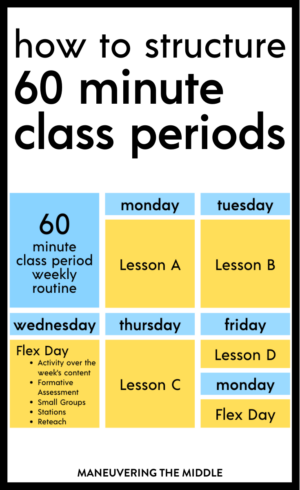

How long are your class periods? Let’s discuss ways to structure a 60 minute class period.
These of course are guidelines; sometimes albeit often, in a middle school classroom, things do not go according to plan, but it is always a good idea to have a structured routine for both yourself and your students.
**Be sure to check out our posts on structuring a 45 minute lesson and a 100 minute lesson.

A bell ringer is a great way to start off your class period! This really sets the stage for a productive class period and communicates every minute is valuable. No matter if you have 60 minute class period or a 200 minute class period – include a warm-up.
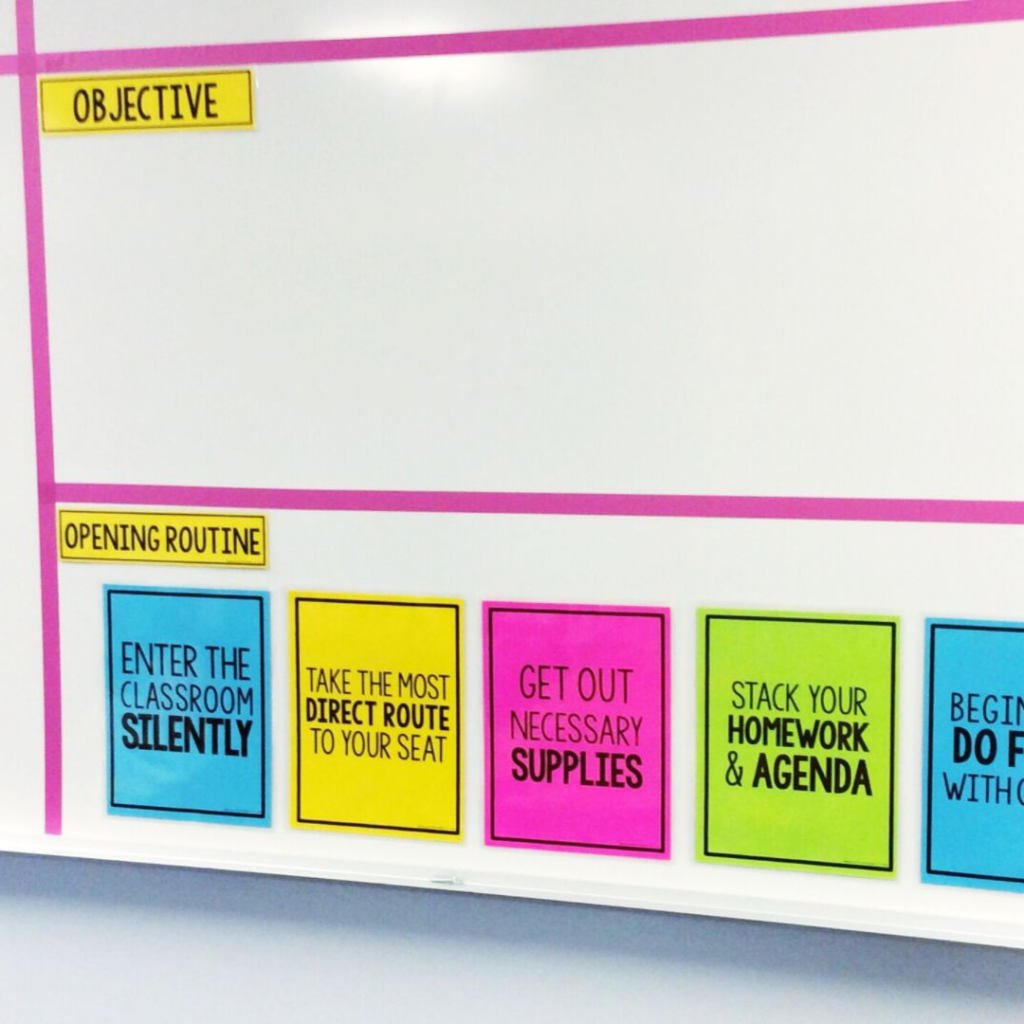
If you assign homework, make sure that students have a moment to receive feedback in some way, so they know if they are practicing correctly.
Keep direct instruction short and sweet. The rule of thumb is that notes should not take longer than 1 plus your students’ age, so if you teach 12 year olds, your notes should last no longer than 13 minutes (12+1). Students are only capable of active listening for so long.
If you need more than that recommended amount of time for direct instruction, that is ok! Give students the opportunity to practice and engage in a meaningful way before returning to direct instruction. Another idea is to assign our student videos, since they adhere to this time recommendation.
Remember that direct instruction isn’t your only option to teach a lesson. You could:
Lastly, I think it is important to note that if you are using our curriculum, you do not need to go over every single problem on a student handout. Work the problems ahead of time, decide which are the most important, and then save the rest for small group work time.
After the lesson, comes the practice! This can be a card sort, matching activity, scavenger hunt, white board practice, a game, or station work. If you have a worksheet, then be sure to check out these ideas to make any worksheet an engaging activity.
Now that everyone has something to do – let’s start small groups! You can pick the unused problems from the lesson or use the same activity being used by the rest of the class. The key is that students receive immediate feedback, and you can catch those misconceptions in real time.
What is important here is that you have more work than what can get done in the time period or you have an extension activity that students can grab without support.
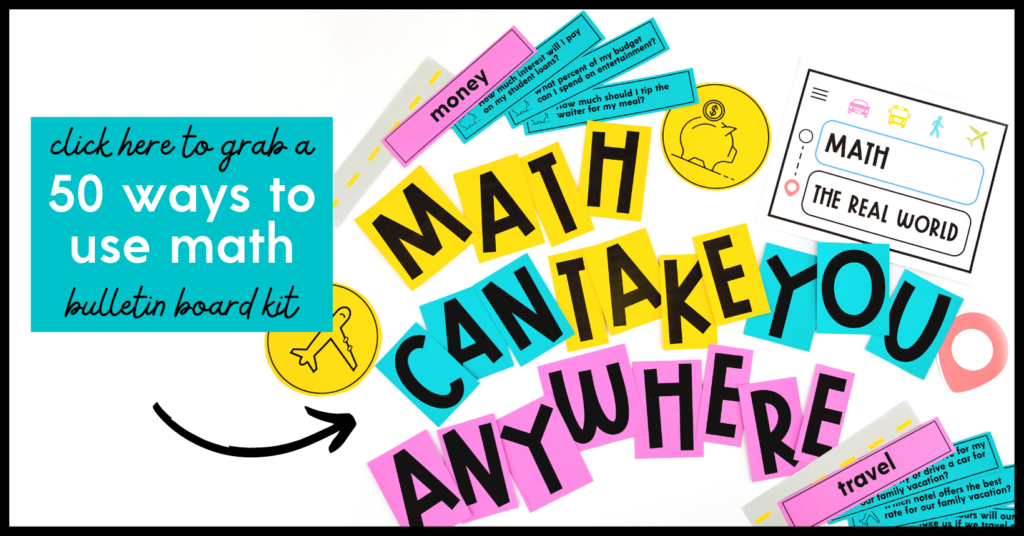
The goal by the end of class is that students can practice the skill independently. This is the work to check as a formative assessment and decide whether the class needs more practice.
Flex days are a great way to allow students to digest what they have been learning. A minimum of one per week is a good starting point – it allows you as the teacher to button up any misconceptions and for students to explore a skill or topic more fully. Structuring a flex day is very similar in structure to a typical lesson:

60 minutes is a great amount of time to implement a self-paced classroom! Students have time for a warm-up, to get out the needed technology, to work at their own pace, and you have time to implement mini-lessons (if needed) and small groups!
We have an entire blog post devoted to the self-paced classroom.
Whew! I hope these suggestions help spice up your weekly routines! How long are your classes? How do you structure your 60 minute class period?
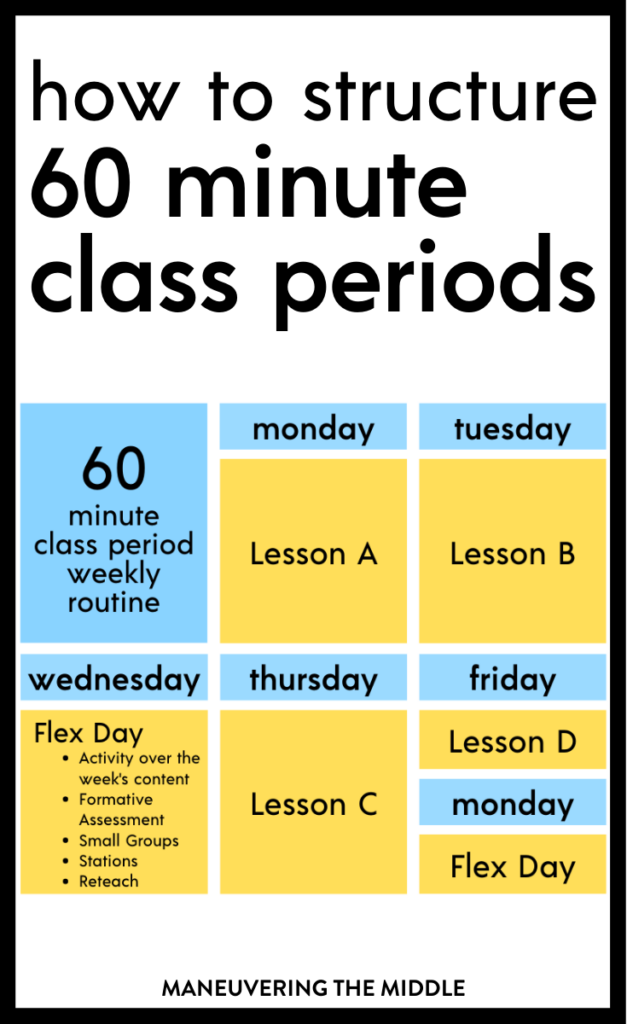
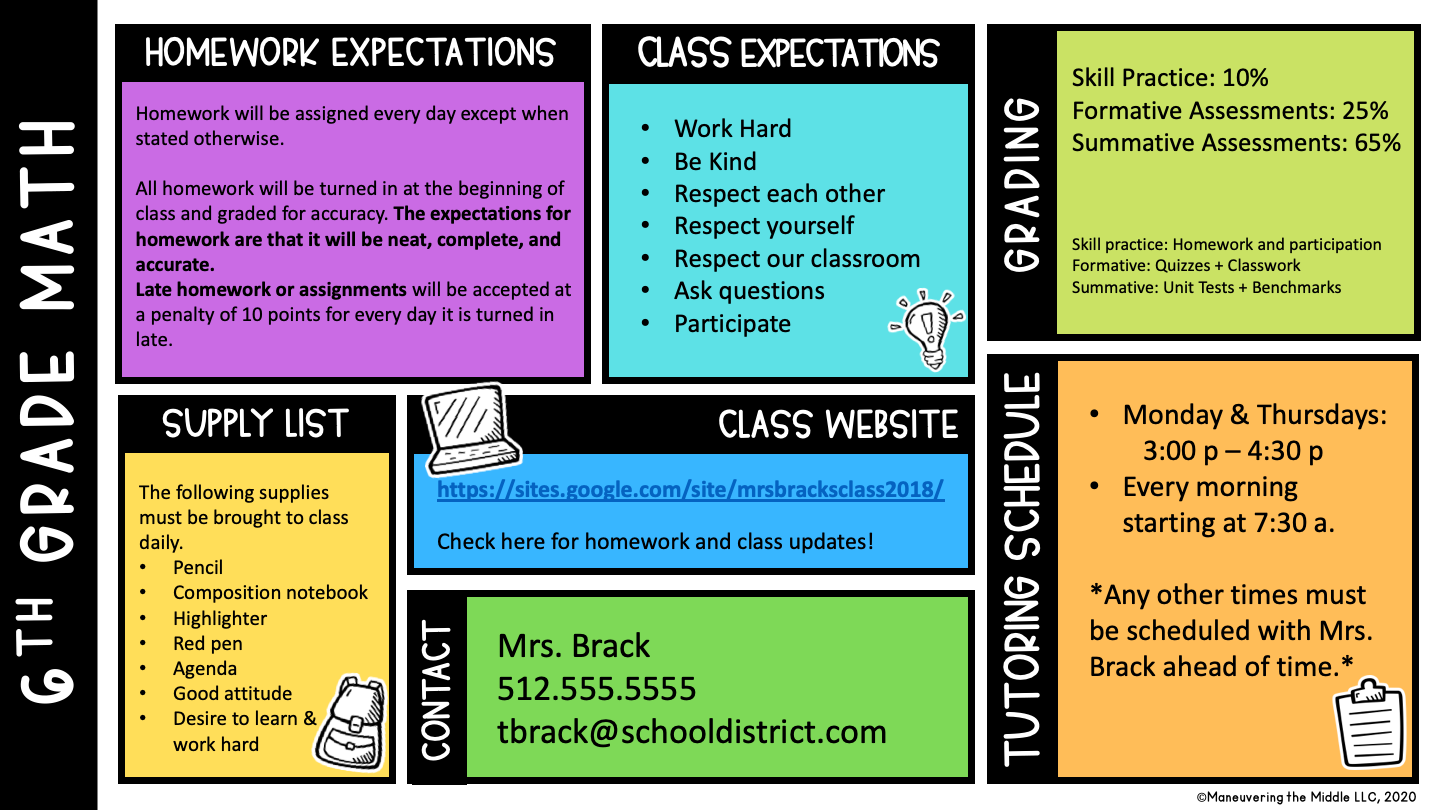
Get your free digital or printable middle school syllabus!
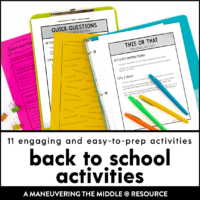
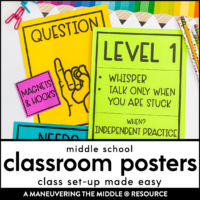
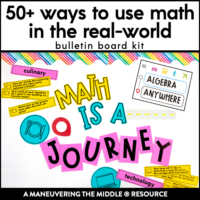
I teach my 6th grade math classes for 112 minutes beginning at 11:25 until the end of the day at 3:15. Not my choice. It is a real trick to get 11 and 12 year olds active and excited about math in the afternoon.
Shari, 112 minutes is so long! How do you break up your class period? Have you tried using stations or working with small groups? Does every student on campus get 112 minutes of math? I would love to know more.
Noelle, We have a block schedule so the students get 112 minutes of math every other day. I break up the time with a warm-up/problem solving, review of previous material, new material, and then practice of new material which could be independent, small group or whole class game/activity.
Is that your lesson plan sample you have a picture of? I would love if you shared that! It’s so clean and simple, I love it!
Hi Aubrey! That is actually a sample from my substitute binder. It is pretty streamlined for subs. Here is the link if you are interested: https://www.teacherspayteachers.com/Product/Substitute-Binder-Secondary-Teacher-Binder-for-Subs-1309633 I am working on a teacher forms pack and will be sure to share it when its ready. Thanks!
I just want to say, I LOVE YOUR SITE! I will be a first year 7th grade math teacher in about a month and you have helped me to prepare in so many ways. Quick question: What do you mean by mixed answer key?
Hi Asia, thanks so much! I just mean the that solutions are all mixed up. A little different than self-checking where is would actually tell you that the answer to each specific question. Hope that helps!
Noelle, Do you have any suggestions on how to structure 45 minute M-F periods? I want to incorporate small group time and rotations into my 8 Pre-Algebra class, but am struggling to work out a schedule that could be fairly consistent.
Hi Sarah, I think with 45 minutes you are going to have to limit your small groups to just one, possibly two. I would suggest trying to pull your small group on Fridays, so that you could help fill in any gaps from the week. Once you have a good system with one group, once a week, try adding in another day or group. Good luck!
This is great! We just changed to 60 minute lessons after rushing through a mixture of 40, 45 and 50 minute lessons last year. I am going to use this, Down Under in New Zealand! I have created and laminated the steps so they are on the board for all the boys to see. Thank you!
This I will only see my math students 3 days a week. I will have 2 days with 120 minutes periods, and 1 day with 60 minutes period. Do you have any suggestions how I should structure a 120 minute class period. The goal is to teach two skills in those blocks to make up for the 2 days I will not see them. Any help will be great. Thank you
I am in a 6th grade classroom with teacher teaching all subjects! Like middle school! I am doing my clinical teaching and we have 45 minute block for Math every day. Teacher is struggling with juggling all subject lesson planning and I am trying to teach students math according to the TEKS associated for each weeks lesson plans. I am having hard time having a plan for that 45 minutes math block. I usually start off with a 5 minute warm up but students want to spend more time on the warm up and they complain they did not have enough time. Then teacher wants me to go over with them a problem or two from the warmup. Then teach them something new and give them a handout for it to work on. Teacher is creating “lessons” as the day goes and it is very do frustrating for me to just teach “on the spot” as I am the type of person who needs exact plan of what I should be doing and what students should be doing during the 45 minutes. Please provide any information as to help me with my dilemmas for planning my 45 minute math blocks. Regards, Mr. Ali
Hi there! Love your resources and your ideas! I have a 40 minute class period and am really struggling! Any ideas??
Hi, Stephanie! That is so short! I think you do one warm up question, straight to notes, and students start on their practice (which turns into homework). Then maybe once a week students complete an activity instead of learning new information. Best of luck!
I’m a Student Teacher right now for Ag Bio and this is very useful.
I was really losing my students during lecture, so I’m going to try this rule of thumb (1+ student age).
Thanks Noelle!
Maneuvering the Middle is an education blog with valuable tips for lesson planning, classroom technology, and math concepts in the middle school classroom.